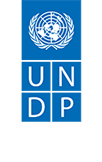The issue > The Invasive Aquatic Species
Ballast water serves as a vector for the transfer of species from one part of the world to another. Where this new area is outside of its natural geographic range, the species which has been transferred is commonly known as an alien species (alternative terms are non-native or non-indigenous). If the environmental conditions in this new geographic area are suitable, the alien species may then not only survive, but may establish and spread, in many cases causing, or with the potential to cause, harm to the local environment, economy, or human health. Such species are generally called invasive alien species, but other terms used for marine invasive include Introduced Marine Pests (IMPs) (Australia and New Zealand), Aquatic Nuisance Species (ANS) (United States), Harmful Aquatic Organisms and Pathogens (HAOP) (IMO Ballast Water Management Convention).
According to the BWM Convention: Harmful Aquatic Organisms and Pathogens’ means aquatic organisms or pathogens which, if introduced into the sea including estuaries, or into fresh water courses, may create hazards to the environment, human health, property or resources, impair biological diversity or interfere with other legitimate uses of such areas.
Invasive alien species are now generally recognized as one of the greatest threats to biodiversity globally. They also have serious economic, environmental and health impacts and, as a result, place major constraints on development. In marine and coastal environments, invasive species have been identified as one of the four greatest threats to the world’s oceans along with:
- land-based sources of marine pollution;
- over-exploitation of living marine resources;
- physical alteration/destruction of marine habitats.
It should be noted that shipping and ballast water is only one of many possible vectors for the transfer of invasive species. Also, vectors and pathways often overlap.

The introduction of alien species into a new environment can have serious negative consequences for the environment, for the economy and for human health.
Ecological impacts may include:
- Competing with native species for space and food
- Preying upon native species
- Altering habitat
- Altering environmental conditions (e.g. decreased water clarity)
- Altering the food web and the overall ecosystem
- Displacing native species, reducing native biodiversity and even causing local extinctions
Economic impacts may include:
- Reductions in fisheries production (including collapse of the fishery) due to competition, predation and/or displacement of the fishery species by the invading species, and/or through habitat/environmental changes caused by the invading species;
- Impacts on aquaculture (including closure of fish-farms), especially from introduced harmful algal blooms;
- Physical impacts on coastal infrastructure, facilities and industry, especially by fouling species;
- Reduction in the economy and efficiency of shipping due to fouling species;
- Impacts or even closure of recreational and tourism beaches and other coastal amenity sites due to invasive species (e.g. physical fouling of beaches and severe odours from algal blooms);
- Secondary economic impacts from human health impacts of introduced pathogens and toxic species, including increased monitoring, testing and diagnostic and treatment costs, and loss of social productivity due to illness and even death in affected persons;
- Secondary economic impacts from ecological impacts and biodiversity loss;
- The costs of responding to the problem, including research and development, monitoring, education, communication, regulation, compliance, management mitigation and control costs.
Human health impacts
Given the magnitude of ongoing ballast water transfers, there is significant potential for large-scale movement of micro-organisms by ships. This has received attention from both epidemiologists and invasion biologists.
There is evidence that cholera epidemics can be directly associated with ballast water discharges (see Examples of IAS). While Vibrio cholerae and other pathogens are normal constituents of coastal waters, they do not ordinarily occur in high enough concentrations to cause human health problems. However, with expanding world trade and an increasing number of ships moving among international ports, the transfer of microbes could well be the most insidious threat related to ballast water discharge.
In addition to bacteria and viruses, ballast water can also transfer a range of species of microalgae, including toxic species that may form harmful algae blooms or ‘red tides’. The public health impact of such outbreaks is well documented and includes paralytic shellfish poisoning, which can cause severe illness and even death in humans.




